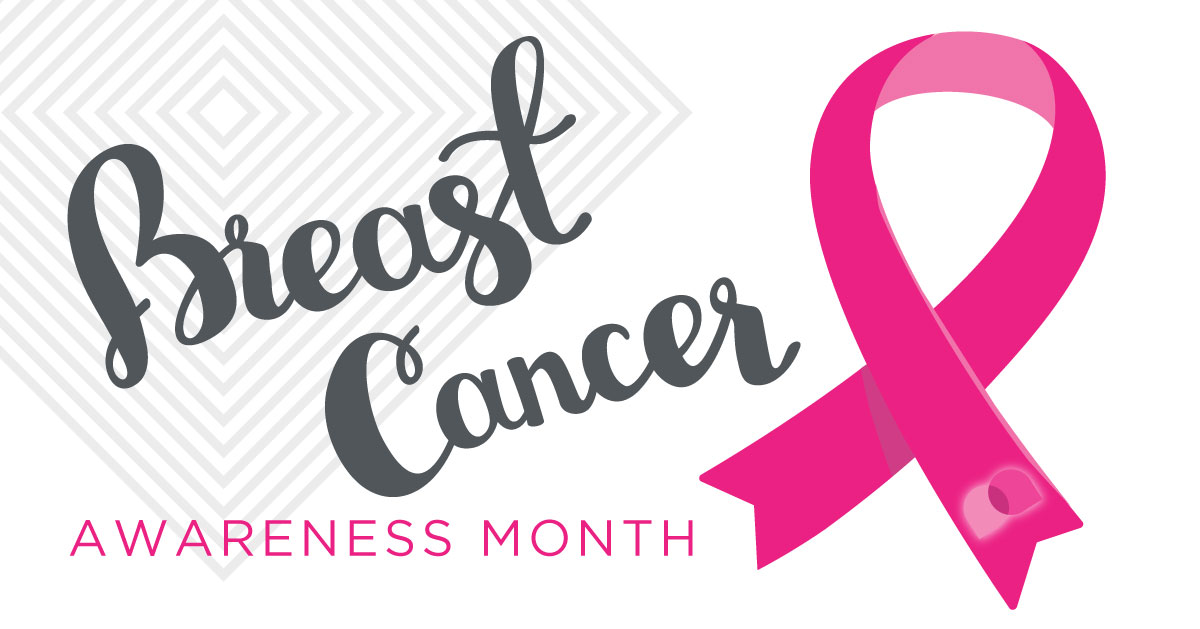October is pink everything, symbolizing Breast Cancer Awareness Month. From powerhouse brands going pink to professional sport leagues like the MLB and NFL rocking #BreastCancerMonth gear, it’s all to help raise awareness (and money) for the fight against this deadly disease. Even Triage tricked out its logo in the hue to spread the word. But, there’s more to it than just aesthetics.
Around 250,000 woman and 2,300 men in the US are diagnosed with some form of breast cancer annually, the CDC reports.
“Did you say men?”
Yes, yes we did. While the majority of diagnoses are women (about 1 in 8 US women), men can be diagnosed with breast cancer, too. And if you learned something new just now, that’s what this awareness campaign is all about.
Here’s a quick rundown of the who, what, when, where and how of breast cancer, along with links so you can learn more.
Who is at risk for breast cancer?
If you have a strong family history of cancer, whether you’re a woman or a man, talk to your doctor about potential risks. It’s important to treat cancer early, so he or she may recommend that you meet with a genetic counselor and consider testing to see if you carry genes that increase your risk of cancer, such as a BRCA1 or BRCA2 genetic mutation.
Aside from genetics being a risk factor, the Mayo Clinic outlines a few other factors that may put you at an increased risk of breast cancer:
- Being a woman (aaawesome *eye roll*)
- Increasing age (*heavy sigh*)
- Radiation exposure
- Obesity
- And others
What are the signs and symptoms of breast cancer?
Annoyingly, breast cancer typically produces no symptoms when the tumor is small (and when it needs to be caught), which is why it’s very important to follow recommended screening guidelines for detecting breast cancer at an early stage. If caught early, there’s a good chance it can be cured.
When breast cancer has grown to a size that can be felt, the most common physical sign is a painless lump. Sometimes breast cancer can spread to underarm lymph nodes and cause a lump or swelling, even before the original breast tumor is large enough to be felt.
Note: pain (or lack thereof) does not indicate the presence or the absence of breast cancer. Any persistent abnormality in or around the breast should be evaluated by a physician ASAP.
When should I get a mammogram?
Women, age 45…if you have no known family history of cancer, especially no immediate family with cancer. If that is your family history, it’s recommended you begin screening at age 30.
Men, you don’t need to…unless you have a strong family history of breast cancer. In that case, men 35 and older—with a BRCA genetic mutation, or immediate family history of cancer—should have annual physical exams around your pectoral muscles, checking for unusual lumps or pains should suffice according to BreastCancer.org.
Where do I get a mammogram?
Check with your primary physician for mammogram provider recommendations. Just remember, quality is important when it comes to your health, which is why you don’t eat off the McDonalds Dollar Menu, right? Okay, just not that often. Some helpful things to remember before choosing a facility:
- Make sure the facility is accredited by the American College of Radiology (ACR).
- Like anything else, check the facility’s reviews.
- Newer equipment makes a difference.
- Ask questions before and during the screening so you know exactly what’s going on in terms you can understand.
You can also contact the National Cancer Institute (1-800-4-CANCER) or the American College of Radiology (1-800-227-5463) to find a certified provider near you.
How can I prevent or decrease my chances of getting breast cancer?
At this time, there’s no definite way to prevent breast cancer, but there are things you can do to lower your risk. The American Cancer Society suggests:
- Avoiding alcohol (womp womp)
- Regular exercise (it always comes back to this, swear…)
- Maintaining a healthy weight
- Eating healthy.
- Knowing your body and being aware of changes.
How can I get involved?
“Wait, didn’t we already cover the ‘how’ in the above…”
Shhhh…we’re so glad you asked how you can join the fight against breast cancer with us! There are plenty of simple ways to support the cause. Here are a few ideas:
- Wear pink as much as possible this month—when someone comments about your stylin’ fashion choices, use it as an opportunity to mention the importance of breast cancer awareness and prevention (psst..that’s what raising awareness means).
- Donate to one of the many worthy charities raising money for this cause.
- Start a fund-raiser, like this local Nebraska RN, selling funky socks to raise money for Project Pink’d (or go ahead and purchase some).
- Purchase items with the pink ribbon, indicating a portion of the proceeds go to a breast cancer charity.
- If you’re a breast cancer survivor, bless your soul, and know that you can help others do the same by joining a clinical trial.
- Sign up to be a member of the American Cancer Association’s Action Network, which makes sure breast cancer remains a priority issue for elected officials.
- Encourage others to join the awareness campaign this month.
Think you have the facts down about breast cancer, smarty pants? Put your knowledge to the test with this breast cancer quiz created by the University of Rochester Med Center. Still have questions? Read some common Q and A’s to learn more.
Keep pink in the wardrobe rotation in October (ahem, real men can wear pink) and keep advocating for breast cancer awareness, Team Triage.
